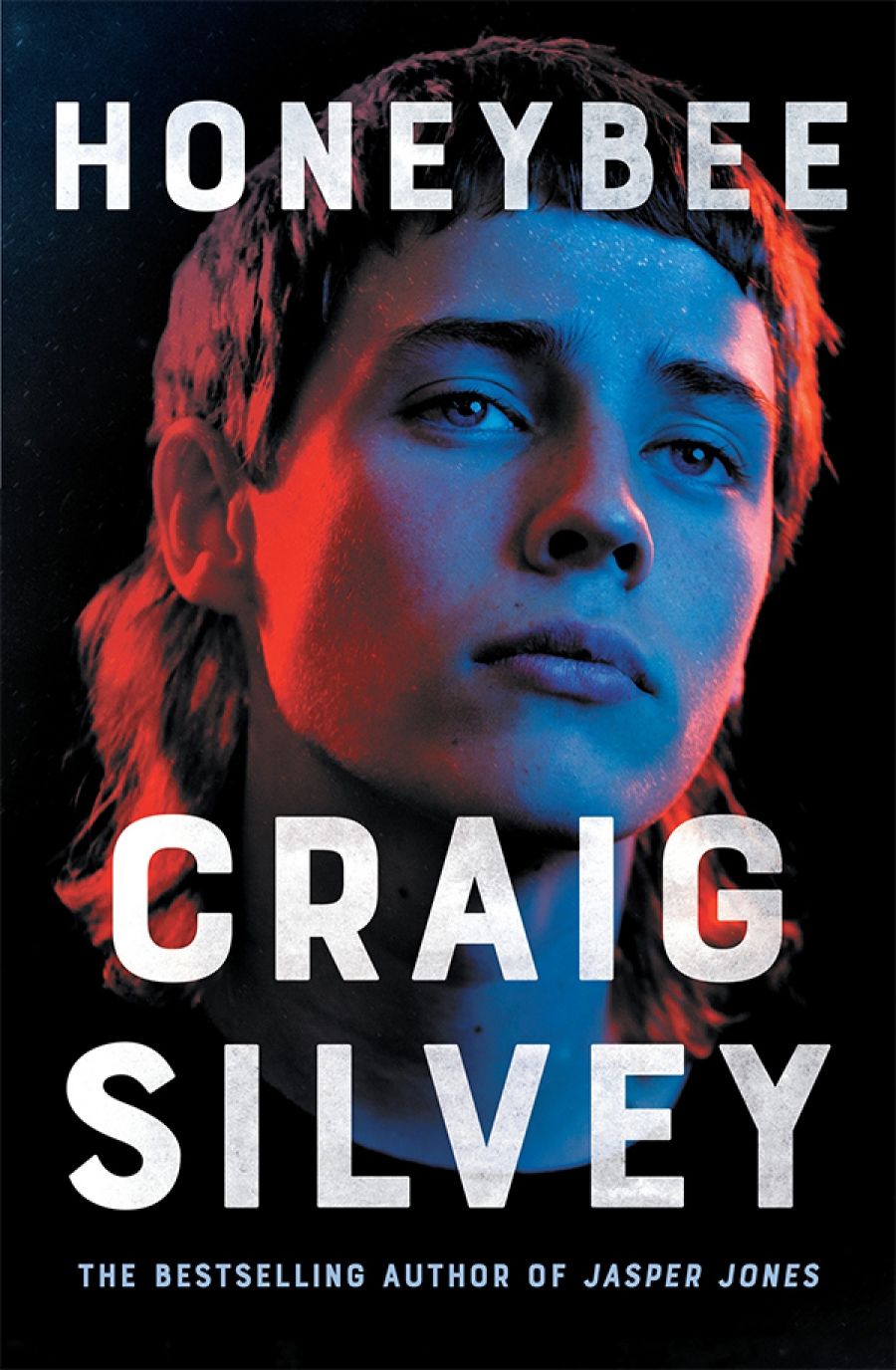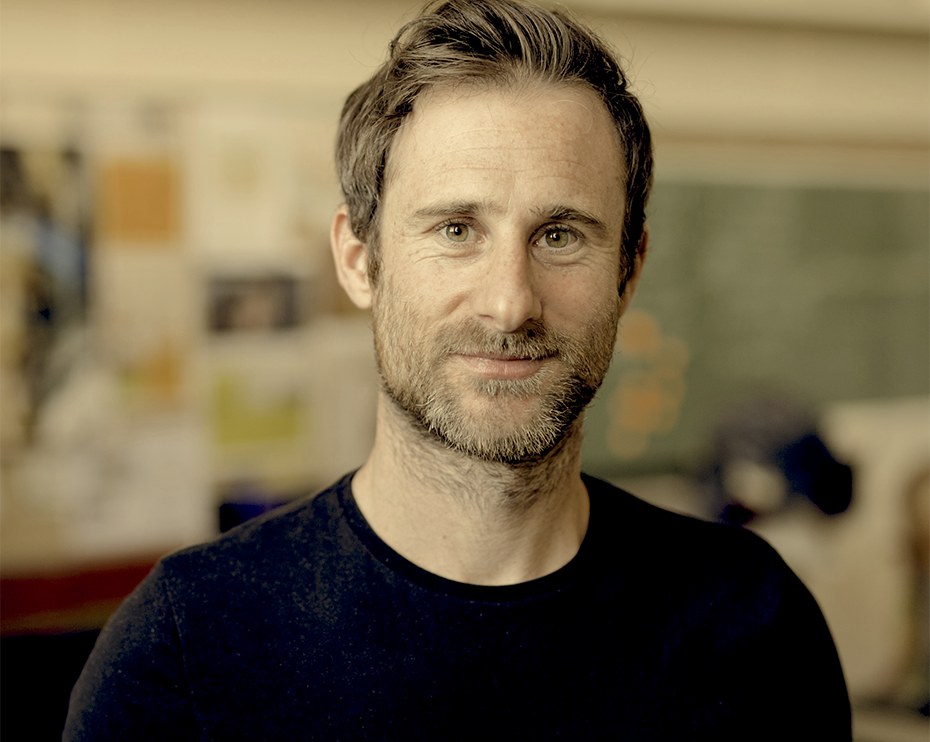
- Free Article: No
- Contents Category: Fiction
- Review Article: Yes
- Article Title: A bumpy road
- Article Subtitle: Craig Silvey’s new novel
- Online Only: No
- Custom Highlight Text:
Honeybee, Craig Silvey’s highly anticipated new novel, his first since Jasper Jones (2009), chronicles the coming of age of fourteen-year-old transgender narrator Sam Watson, who was assigned male at birth. This is a story of desperate loneliness and fear, of neglect, family violence, betrayal, and self-disgust. But it is also one of love and solidarity, a celebration of the kindness of strangers who become family and friends.
- Grid Image (300px * 250px):

- Book 1 Title: Honeybee
- Book 1 Biblio: Allen & Unwin, $32.99 pb, 432 pp
- Book 1 Readings Link: booktopia.kh4ffx.net/k5Wx0
The novel opens late one night on the outskirts of Perth where Sam has come to end her short, turbulent life. Vic, an elderly widower, is smoking what he thinks will be his last cigarette. He is tired and in pain, but he steps back from the edge to save Sam’s life. The encounter changes everything – for Vic, for Sam – and their meeting sets in motion a string of events that will ultimately allow Sam to embody without shame ‘who I really am’.
For as long as she can remember, Sam has dressed up in her mother, Sarah’s, clothes and mimicked the gestures she makes. School is difficult: there are bullies, bruises, burns, and, before long, self-harm. There are no friends:
When I was in year three, I was taken out of class by … the school counsellor … She asked questions about my long hair, about why I had no friends … about things I liked and didn’t like. Then she asked if I was a boy or a girl.
‘I don’t know,’ I said. ‘I’m just myself.’
She asked me again. It was a question other kids always asked when they were teasing me. I knew that being a girl was something weird and wrong and shameful.
I told her I was a boy.
The need to categorise – boy/girl – and the apparent rigidity of these categories has left Sam ostracised: ‘I didn’t know how I was supposed to be. It was like I was born speaking a language that nobody else could understand, but I couldn’t talk any other way. So I stopped speaking, and I learned how to be invisible.’
 Craig Silvey (Llihsemaj/Wikimedia Commons)
Craig Silvey (Llihsemaj/Wikimedia Commons)
Others do speak Sam’s language. Even before the encounter with Vic, a community of voices has begun to suggest to her new ways of imagining a self, though they still seem well out of reach. On a stolen iPad, Sam obsessively watches episodes of Julia Child’s The French Chef and learns how to cook. It is also via the internet that Sam discovers drag and dresses up to perform one version of a possible self via live webcam.
Role play is crucial for Sam both as a way of trying to become invisible and as a means of experimenting with her own identity. In the same way that Sam mimicked her mother, in an attempt to ‘disguise myself as a boy’ and to avoid further victimisation, Sam imitates the way Steve and his friends do their hair, how they dress and walk. But this disguise is unsustainable. It is after a particularly brutal confrontation with Steve that Sam runs away and, eventually, meets Vic.
Vic offers Sam a place to stay. It is during this period of respite that Sam begins to test the rigidity of those boy/girl categories outlined by the school counsellor. In Aggie, Vic’s teenage neighbour and a D&D diehard, Sam finds a friend who can see through her attempts to play a role that is unnatural to her. It is also while staying with Vic that Sam meets Peter – aka drag queen Fella Bitzgerald – with whose help she finally learns the difference between playing dress-ups and being oneself:
When I went to school or I had to go outside, that’s when I was playing dress-ups. That’s when I was pretending to be somebody else. … And I’m not wrong, I’m me. And I don’t want to be invisible any more. I want people to see who I am.
It’s a bumpy road between playing at a self and being one. Silvey’s compassion for Sam is clear, and a lot of the narrative is concerned with the physical and emotional violence done by a culture that insists upon a binary position, on only one way of being ‘a fuckin’ man’ or a woman. By seeking to depict the inner conflict of a transgender teenager, Honeybee struggles to offer a different perspective to the representation of predominantly (but by no means only) male violence. The problem, for me, is that I found many of the characters and situations in the novel unconvincing. Silvey’s interrogation of socially imposed roles and rigidly policed identity positions relies upon the uncritical adoption of oversimplified Australian male archetypes (the repentant Vietnam veteran, the dead-inside soldier returned from Afghanistan, the wholly toxic Call-of-Duty player). And the character of Sam, and her story, reads as similarly oversimplified. Ultimately, Sam’s is a fairy-tale transformation: from poverty and family violence to financial independence, an apprenticeship under a cordon bleu chef, and the right to transition safely, supported by a new family of friends all by the age of almost fifteen. It is too much, too soon, especially in light of the real challenges to trans identity that Silvey depicts in Honeybee.


Comments powered by CComment